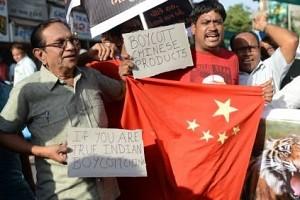How banning Chinese Products would Help the Indian Economy?
Home > News Shots > Business newsFollowing the border standoff in Ladakh, China has been in news in India for all the wrong reasons. #BoycottChineseProducts and #BoycottChina have gained a lot of momentum in social media. This comes after the Prime Minister spoke about Atmanirbharta (self-reliance) during his address to the nation.

However, does a campaign targeted towards economic boycott have any scope of success? Despite, recent setbacks to globalizations, the world we live in is highly interconnected and countries are interdependent on each other. Many Indian products either use Chinese components or Chinese machinery to manufacture products. Businesses might opt to go for the machinery that costs the lowest. Besides, many large Indian companies such as Dr. Reddy’s Laboratories, Mahindra & Mahindra and Sundram Fasteners have manufacturing units in China that cater to markets abroad. The entire industry might bear the brunt of boycotting Chinese products.
Commentators have also pointed out how Chinese investors have invested billions of dollars in local start-ups.
It is undeniable that India is a large market for Chinese goods. Almost 3% of China’s products are exported to India and earned a profit of almost $75 billion in 2019. However, India's $17 billions of exports to China account for a much-higher 5.3% of our total exports. A trade war will hurt India as well.
Experts have also identified that since many Chinese components are used during manufacturing, it would be very difficult to distinguish and label products as Chinese.
In 2014, economist Kilian Heilmann published a study titled The Effectiveness of International Trade Boycotts, based on two international cases. He studied the boycott of Danish goods by Muslim countries in 2005-06 and China’s boycott of Japanese goods after the Senkaku/ Diaoyu Island conflict in 2012.
“Product-level analysis shows that the impact is concentrated in consumer goods with only minor effects for intermediates and capital goods, being consistent with the notion that international trade boycotts are mainly carried out by consumers and not by firms," he observed.
“While the estimated disruption in imports from the boycotted country can be large, the fraction as total exports of the boycotted country is very low in both boycott cases (0.4% for Denmark and 0.8% for Japan). This suggests that even though an individual firm of the boycotted country might be hit hard, the overall effect on the export sector is negligible, rendering the punishment effect as mostly ineffective."
China was the first country to be affected by the outbreak and hence was also the first country to recover. China is currently looking for raw materials that will boost its recovery process and this gives Indian suppliers a business opportunity. By April, China commenced importing finished and semi- finished steel from India.
Experts unanimously agree that the boycott of Chinese goods is not a purely economic but is more of a geo-political move.
India’s Defence Minister Rajnath Singh has been stressing on the need to resolve the border issue through dialogue. After taking the aforementioned factors into consideration, one can understand that boycotting Chinese products will have implications on the Indian Economy as well. Hence, it is important to try and endeavor the path of geopolitical negotiations.
OTHER NEWS SHOTS








